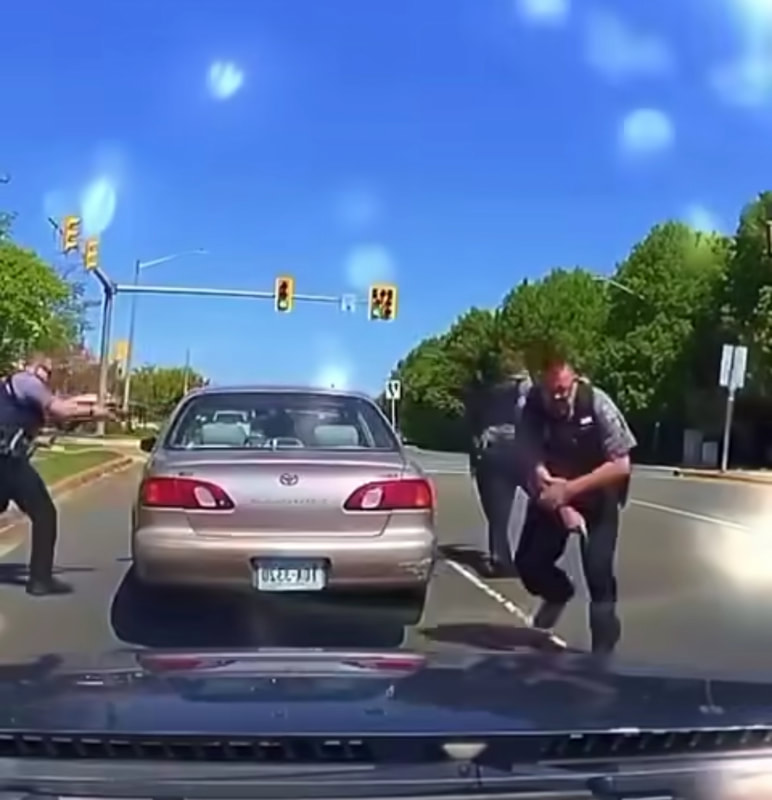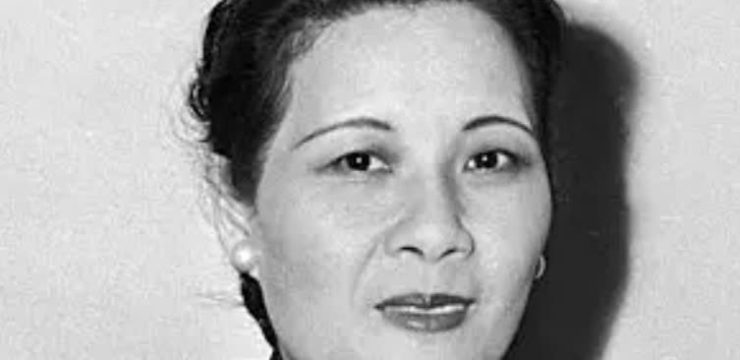What began as a routine traffic stop on a quiet Friday morning in Nashville quickly escalated into a tragedy that no one could have predicted. A situation that initially appeared calm and under control unraveled within minutes, ending in gunfire, one life lost, and a city left grappling with difficult questions about policing, accountability, and human behavior under pressure.

According to Metro Nashville Police, Officer Josh Baker initiated the stop around 9:30 a.m. after identifying a black Chevrolet Camaro linked to 42-year-old Demond Buchanan, a convicted felon wanted on six outstanding drug-related warrants. When the officer approached the car, however, he didn’t find Buchanan behind the wheel. Instead, the driver was 31-year-old Nika Holbert, whose connection to Buchanan remains unclear. At first, the encounter appeared ordinary. Baker greeted Holbert and began asking routine questions. Her tone was cooperative enough to keep the situation calm—at least for a moment.
But that calm didn’t last long. Body-worn and dashboard camera footage released later by police shows Baker returning to his patrol car after the initial interaction, apparently to verify information about the vehicle and its registration. Moments later, he returned to speak with Holbert again and asked her to step out of the vehicle. When she did, he searched her purse and found a small plastic bag containing a white, powdery substance that he suspected was illegal narcotics. According to the footage, Baker informed Holbert that he would need to take her into custody. That was when the situation took a turn for the worse.
Holbert began to panic, repeatedly insisting that she had “done nothing wrong.” The footage shows her pulling away from Baker’s grasp and sliding back into the driver’s seat, apparently intent on fleeing. Baker tried to prevent her from escaping, warning her multiple times to comply. When verbal commands failed, he deployed his Taser in an attempt to subdue her without using deadly force. The device, however, did not have the intended effect. Holbert continued to resist, and within seconds, she pulled out a handgun.
“Ma’am, put the gun down!” Baker shouted repeatedly, his voice urgent and strained. But before he could take cover, Holbert fired a single shot that struck him just below his protective vest. The impact knocked him backward. Though seriously wounded, Baker returned fire as Holbert sped off in the Camaro, leaving the officer on the ground.
The chaotic sequence of events unfolded in less than a minute, captured in detail by the officer’s body camera. Witnesses nearby reported hearing multiple gunshots followed by screeching tires as the vehicle raced away. Holbert managed to discard her weapon as she fled but lost control of the car and crashed a short distance from the scene. Emergency responders quickly arrived, finding her critically injured. She was transported to Skyline Medical Center, where doctors later pronounced her dead from a gunshot wound.
Despite his injuries, Officer Baker remained conscious long enough to radio for help. “Shots fired,” he told dispatchers, his voice strained but steady. “I’ve been hit.” Fellow officers arrived within minutes and provided first aid before he was airlifted to Vanderbilt University Medical Center. Surgeons operated on him, and later updates confirmed that he was in stable condition and expected to recover.
The Tennessee Bureau of Investigation (TBI) has since taken over the case, promising a thorough review of the shooting and the events that led to it. Once the investigation is complete, findings will be submitted to the District Attorney’s Office for further evaluation. Metro Police Chief John Drake emphasized transparency, stating that the department released the footage immediately to give the public a full account of what occurred. “We wanted to ensure openness from the start,” Drake said. “This was a tragic situation for everyone involved.”
Chief Drake also defended Officer Baker’s actions, noting that the veteran officer followed protocol by attempting non-lethal measures first. “He gave multiple verbal warnings and used his Taser before resorting to his firearm,” Drake explained. “He acted to protect his life in a rapidly evolving and dangerous situation.”
Holbert’s family, however, expressed a different perspective. Her adoptive mother, Lisa Holbert-Gooch, publicly acknowledged that her daughter’s decision to draw a weapon was wrong but said she struggled to understand how things escalated so quickly. “Nika made a terrible mistake,” she said tearfully. “But she was also scared. I just wish it hadn’t ended this way.” The family has called for a careful investigation to ensure that every detail is reviewed objectively.
Community reactions have been mixed. While many have voiced support for Officer Baker and his quick response under pressure, others have raised concerns about how confrontations between police and civilians—particularly those involving minor traffic stops—can spiral into deadly encounters. Advocacy groups have pointed to the case as a reminder of the ongoing need for de-escalation training and improved community relations.
Experts in law enforcement procedures note that situations like this underscore the unpredictability of police work. “Traffic stops are among the most dangerous situations officers face,” said a policing analyst. “They never know who’s in the vehicle or what their intentions are. What might seem routine can turn deadly in seconds.”
The tragedy has reignited discussions about public safety, mental health, and how fear and misunderstanding can fuel violence. As the investigation continues, officials are urging residents to reserve judgment until all facts are known. The released footage, while providing crucial context, cannot capture every nuance of what both individuals were thinking or feeling in those final moments.
For Officer Baker, the recovery process will likely be long, both physically and emotionally. Colleagues describe him as a dedicated officer with 14 years of service and a reputation for professionalism. For the Holbert family, the loss of their daughter has left an unfillable void. “She wasn’t perfect,” her mother said. “But she was loved. And she didn’t deserve to die in fear.”
As Nashville processes the shock of this deadly encounter, residents are reflecting on the fragility of life and the thin line that separates control from chaos. What began as an ordinary stop became a moment that changed two families forever—one mourning a daughter, the other grateful that an officer survived. The footage has provided transparency but not closure. For now, the city waits, hoping that the lessons learned from this tragedy will lead to a deeper understanding of the need for compassion, caution, and reform in the interactions between police officers and the communities they serve.





